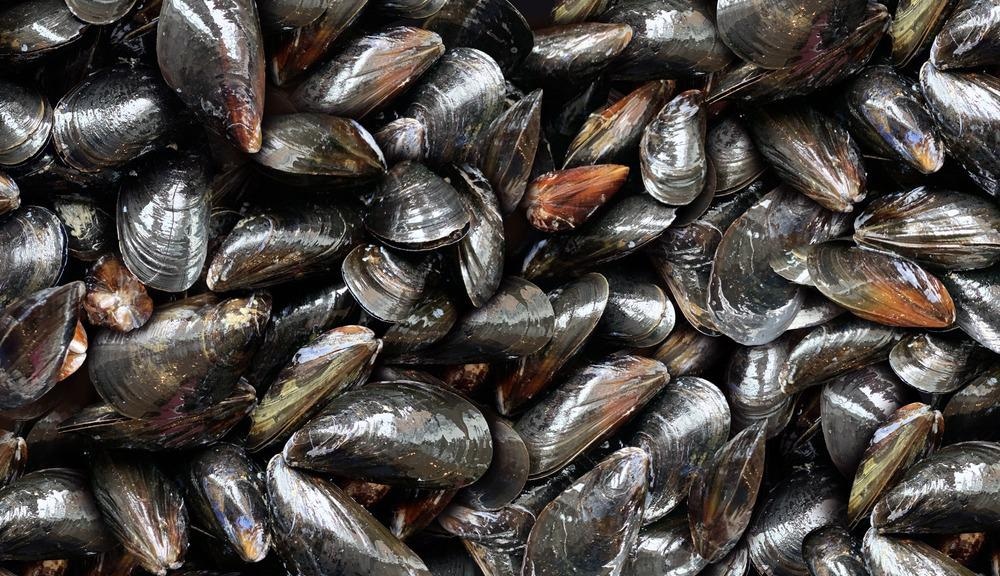 By Surbhi JainReviewed by Susha Cheriyedath, M.Sc.Jun 13 2022
By Surbhi JainReviewed by Susha Cheriyedath, M.Sc.Jun 13 2022In an article recently published in the journal Dental Materials, researchers discussed the role of a novel selective protease inhibitor in slowing the monomer inspired by mussels, i.e., dentine collagen breakdown.

Study: Mussel-inspired monomer – A new selective protease inhibitor against dentine collagen degradation. Image Credit: Lightspring/Shutterstock.com
Background
The endurance of the resin-dentin bond is dependent on the hybrid layer's integrity. However, because the hydrophobic adhesive monomers are unable to completely fill empty spaces around demineralized collagen fibrils and replace the remaining water, uncoated collagen is vulnerable to water hydrolysis and endogenous protease action.
Matrix metalloproteinases (MMPs) and cysteine cathepsins are two types of endogenous proteolytic enzymes that are thought to be responsible for collagen degradation. Many studies have tried to use protease inhibitors to reduce enzyme activity in the dentin matrix in order to prevent collagen fibril breakdown and increase dentin bond endurance.
In experimental adhesive systems, collagen crosslinkers have been widely used. In most published articles, however, the collagen crosslinkers are simply blended with dental adhesives, which may cause the bonded interface to progressively release, reducing the lifespan of resin restorations.
Several studies sought to create a new class of polymerizable collagen crosslinker monomers that might be used in adhesive systems by combining the collagen crosslinker with a polymerizable end. N-(3,4-dihydroxyphenethyl) methacrylamide (DMA), a mussel-derived monomer from the marine environment, has been used as a primer on the dentin surface to extend the resin-dentin bond durability. The findings suggested that DMA could operate as a "bridge" between the adhesive network and dentin collagen fibrils, bringing them together as a single structure to withstand external attacks from the hostile dental environment. The inhibitory effect of DMA on soluble and matrix-bound proteases, on the other hand, has not been studied.
About the Study
In this study, the authors tested the inhibitory effect of a novel mussel-inspired monomer DMA on soluble and matrix-bound proteases. In situ zymography was used to assess the effect of CHX and DMA on matrix-bound proteases, and Image J software was used to compute the fluorescence intensity and relative area.
The team analyzed all of the data using one-way ANOVA and the Tukey test with α = 0.05. The inhibitory effect of CHX and DMA on the soluble rhMMP-2, -8, and -9, as well as cathepsin B and K, was evaluated using fluorometric assay kits.
The researchers used experimental and computational approaches to assess the inhibitory effect of DMA on MMPs (-2, -8, -9) and cysteine cathepsins (B and K) in their soluble and matrix-bound forms. The inhibitory effect of DMA on soluble proteases or matrix-bound proteases was evaluated according to the null hypothesis.
Observations
1 mM chlorhexidine (CHX) and DMA (0, 1, 5, and 10 mM) dissolved in 50% ethanol/water inhibited soluble recombinant human matrix metalloproteinases (rhMMP-2, -8, and -9) and cysteine cathepsins (B and K) utilizing fluorometric test kits and molecular docking.
The Zn2+ ion was bound to the protease's His205, His201, and His211, with some amino acid backbone interaction from surrounding alanine and proline. At -8.9 kcal/mol and -7.1 kcal/mol, respectively, the biguanide group of CHX and the catechol group of DMA developed electrostatic contacts with the Zn2+ ion. At -8.5 kcal/mol and -7.2 kcal/mol, respectively, the biguanide group of CHX and the catechol group of DMA develop electrostatic contacts with the Zn2+ ion. CHX and DMA had binding energies of -10.1 kcal/mol and -7.6 kcal/mol, respectively.
The results showed that the 1 mM CHX solution significantly suppressed the activities of all the soluble proteases, while the inhibitory effect of the 10 mM DMA group was comparable or inferior to the 1 mM CHX group to some extent, except for rh.
Except for rhMMP-9, DMA's anti-proteolytic efficacy was enhanced in a dose-dependent way. 1 mM DMA had a considerably lower inhibitory effect on rhMMP-2, -8, and -9, as well as cathepsin K and B than 1 mM CHX with p < 0.05. The experimental results showed that the binding energy of DMA was inferior to the CHX for all proteases, as predicted by the molecular docking study. In situ zymography demonstrated that all CHX- and DMA--treated groups dramatically reduced the relative area and fluorescence intensity of matrix-bound proteases when compared to the control group (p < 0.05).
Conclusions
In conclusion, this study elucidated that when compared to CHX, the more specific property of DMA might avoid causing potential negative effects by suppressing MMP-9 when used in dental therapy under the condition that total inhibitory performance on the matrix-bound proteases was comparable.
DMA's anti-proteolytic effectiveness increased in a dose-dependent way, with the exception of rhMMP-9. The inhibitory impact of CHX against soluble proteases was much stronger than DMA, according to both experimental and computational analysis. MMP-2 and -8, but not MMP-9, were specifically inhibited by DMA, whereas CHX was a broad-spectrum protease inhibitor. The use of DMA/ethanol solution considerably inhibited matrix-bound proteases, which was comparable to the CHX group.
More from AZoM: What is Glow Discharge Optical Emission Spectrometry
Disclaimer: The views expressed here are those of the author expressed in their private capacity and do not necessarily represent the views of AZoM.com Limited T/A AZoNetwork the owner and operator of this website. This disclaimer forms part of the Terms and conditions of use of this website.
Source:
Li, K., Ngo, F. M.,Yau, A. Y. L., et al. Mussel-inspired monomer – A new selective protease inhibitor against dentine collagen degradation. Dental Materials (2022). https://www.sciencedirect.com/science/article/abs/pii/S010956412200149X